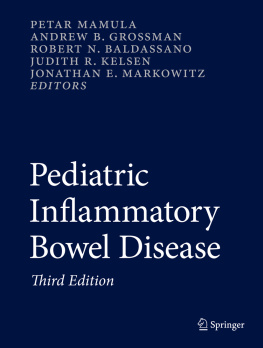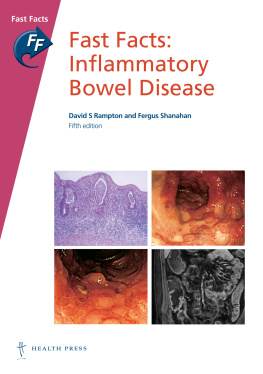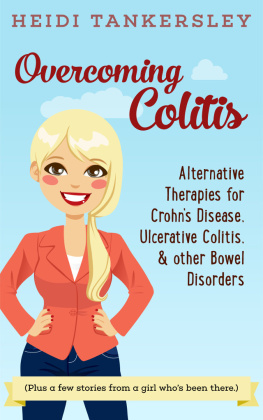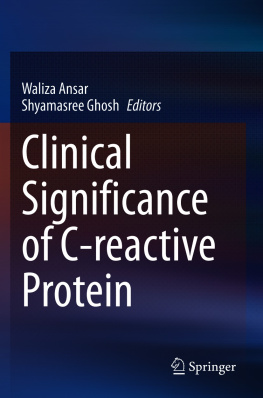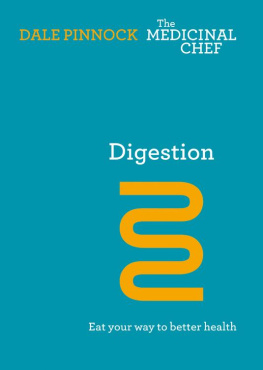Part I
Etiology and Pathogenesis
Springer International Publishing AG 2017
Petar Mamula , Andrew B. Grossman , Robert N. Baldassano , Judith R. Kelsen and Jonathan E. Markowitz (eds.) Pediatric Inflammatory Bowel Disease 10.1007/978-3-319-49215-5_1
1. Genetics of Inflammatory Bowel Diseases
Christopher J. Cardinale 1 and Hakon Hakonarson 2
(1)
Center for Applied Genomics, Childrens Hospital of Philadelphia, Philadelphia, PA, USA
(2)
Center for Applied Genomics, Childrens Hospital of Philadelphia, Perelman School of Medicine at the University of Pennsylvania, Philadelphia, PA, USA
Christopher J. Cardinale
Email:
Keywords
Crohn disease Ulcerative colitis Genetics Heritability NOD2 Genome-wide association study Next-generation sequencing
Introduction
The inflammatory bowel diseases (IBD), Crohn disease and ulcerative colitis, are immune-mediated disorders resulting in chronic, relapsing inflammation of the gastrointestinal tract. The etiology of IBD is multifactorial, influenced by both genes and environmental factors. It has been hypothesized that environmental factors and maladaptive immune responses to gastrointestinal flora generate a dysregulated inflammatory cascade creating mucosal injury in genetically susceptible individuals. Over the last two decades, considerable interest and research have focused on the genetic aspect of IBD. The identification of linkage between Crohn disease and the pericentromeric region of chromosome 16 ( IBD1 ) by Hugot et al. in 1996 spawned a series of genome scans and linkage analyses in search of susceptibility and phenotypic modifier genes []. This abundance of associations shows that IBD is highly polygenic with a complex mode of inheritance.
The field of IBD genetics is of special interest to pediatric gastroenterologists for both practical and investigational reasons. From a clinical practice standpoint, pediatric gastroenterologists are often faced with questions from concerned parents regarding the risk of IBD among current or future siblings, as well as the eventual offspring of the affected child. Understanding genetic associations of IBD can provide patients and their families with useful information that may help them cope with the disease. Furthermore, as our knowledge of genotype-phenotype associations grows, it is anticipated that genotyping at the onset of disease may enable physicians to predict disease course and tailor medical therapies specific for each patient. Insofar as advancing the field of gastroenterology through research, studies of pediatric IBD genetics are significant because children have been exposed to fewer environmental confounders of disease than their adult counterparts. Examining the disease in young individuals could provide us with keys to unlock intrinsic genetic mechanisms in IBD that may not otherwise be detected in adult studies. This may be especially important in individuals with very early-onset IBD (<5 years), whose disease course and phenotypes are the most discordant with those of adult-onset IBD.
Crohn Disease and Ulcerative Colitis: Genetic Epidemiology
Ethnic and Racial Variations of Disease
The genetic underpinnings of IBD are supported by ethnic and racial variations in disease prevalence. The highest rates of IBD are found in Caucasian individuals, especially those of Jewish heritage. Among Jewish subgroups, Ashkenazi Jews have a two- to ninefold greater prevalence of IBD over non-Jewish counterparts []. While intestinal manifestations did not appear to vary based upon race or ethnicity, there were differences in extraintestinal manifestation between groups. Among Crohn patients, African Americans were more likely to develop arthritis and uveitis than whites, whereas joint symptoms and osteoporosis were more common among whites with UC than Mexican Americans.
Family Studies
The concept that IBD may, in part, be hereditary has been well established through observations of familial disease aggregation. Family studies have demonstrated that 530% of probands with Crohn disease and ulcerative colitis identify the presence of IBD in a family member []. While second- and third-degree relatives of IBD probands have a lower likelihood of disease, their risk is still elevated compared to the background population.
Twin Studies
Investigations of monozygotic and dizygotic twins have provided strong evidence that genetics play an integral role in the etiology of IBD. Twin studies are based upon the premise that in the setting of a similar environmental milieu, rates of disease concordance between twins correlate with the influence of genetic factors. To date, three large studies of twin pairs with IBD from Scandinavia and the UK have consistently identified higher concordance rates among monozygotic twins with Crohn disease and ulcerative colitis than dizygotic twins []. A trend toward concordance for age at diagnosis was identified with 4067% receiving a diagnosis of IBD within 2 years of one another. Thus, the concordance data from twin studies provide strong evidence that genetic influences are important in the development of IBD. However, monozygotic concordance is not 100%, and the low concordance between dizygotes suggests that genotype alone is not sufficient for disease evolution.
Identifiable Gene Variants in Crohn Disease
NOD2/CARD15 Gene and Crohn Disease
The NOD2/CARD15 gene located on the IBD1 locus of chromosome 16 is associated with an increased susceptibility to Crohn disease but not ulcerative colitis. Among the more than 30 known amino acid polymorphisms identified in the NOD2 gene [].
Epidemiology of NOD2 Mutations
A NOD2 risk allele confers a two- to threefold relative risk of developing Crohn disease; this risk is increased to 17-fold if two alleles are present []. Although these variants are associated with an increased risk of Crohn disease, 815% of the healthy population possesses at least one of these mutations, and 1% of healthy individuals are homozygous or compound heterozygotes. That genotypic variants are found in individuals without known Crohn disease suggests phenotypic expression of disease is subject to polygenic factors, variable penetrance, and other environmental mediators.
Studies of patients with Crohn disease worldwide have revealed that the association of NOD2 polymorphisms with Crohn disease varies between different ethnic populations. North American adult Caucasian cohorts report carriage rates of 1030% for the three common NOD2 variants, while minority groups were found to have lower allele frequencies. A North American, multicenter study of pediatric patients with Crohn disease identified NOD2 polymorphisms among 25% White, 1.6% African American, and 1.6% Hispanic participants [].
HLA Type and IBD Susceptibility
The major histocompatibility complex (MHC) locus on chromosome 6p encodes genes in the human leukocyte antigen (HLA) family which serve an immunoregulatory function through their role in antigen presentation to T cells. Associated polymorphisms between HLA types and IBD have included HLA-B, HLA-DRB1, HLA-DQB1, HLA-DP, tumor necrosis factor (TNF), heat shock protein (HSP)-70, and MICA []. The polymorphic nature of the HLA region as well as its complex linkage disequilibrium has resulted in heterogeneous findings among investigators. Of the greater than 100 association studies of IBD and HLA performed to date, stronger evidence exists for an association with class II alleles than class I alleles.

